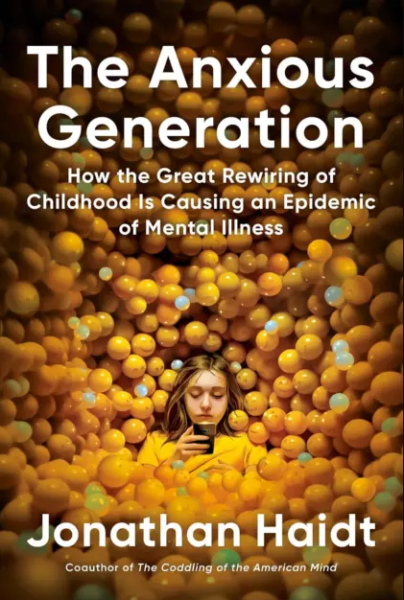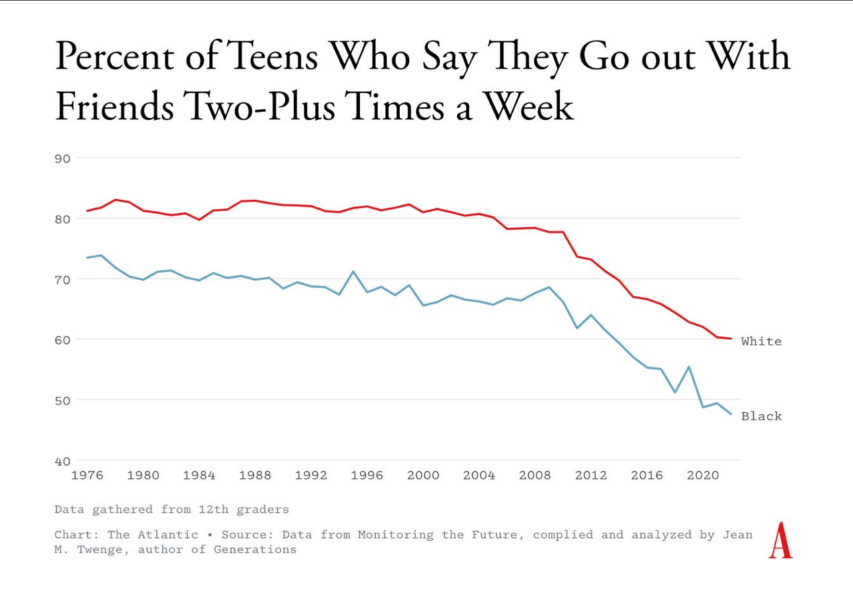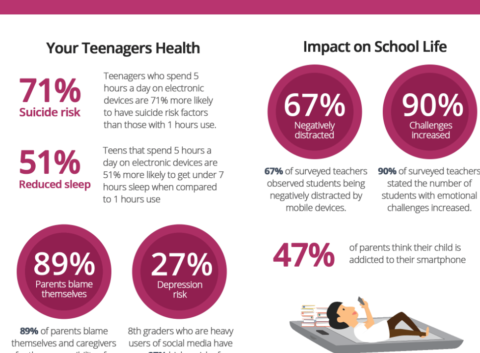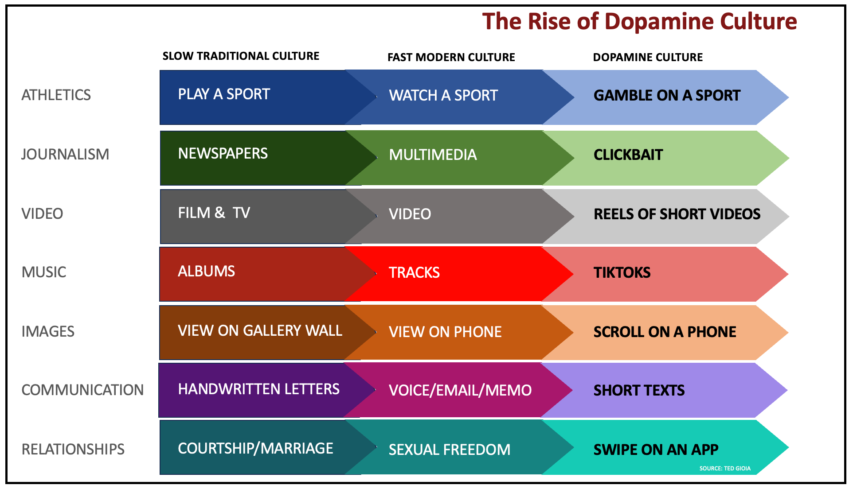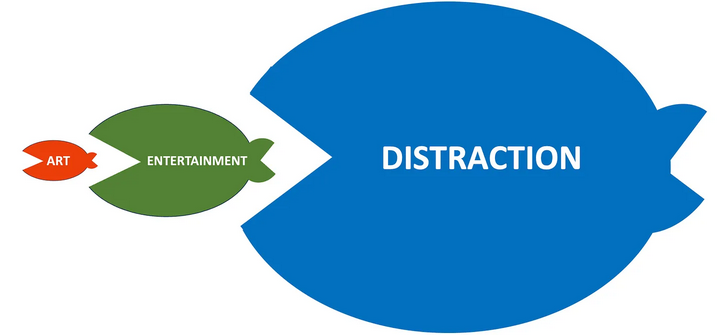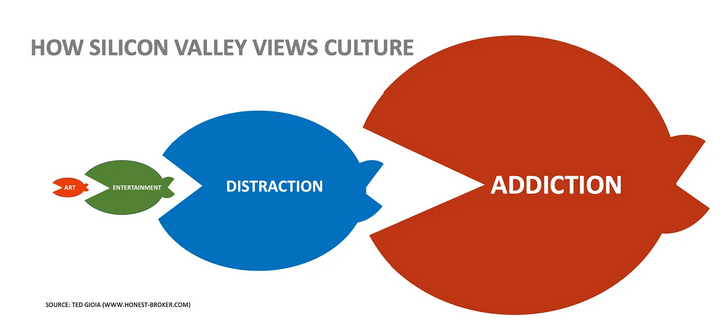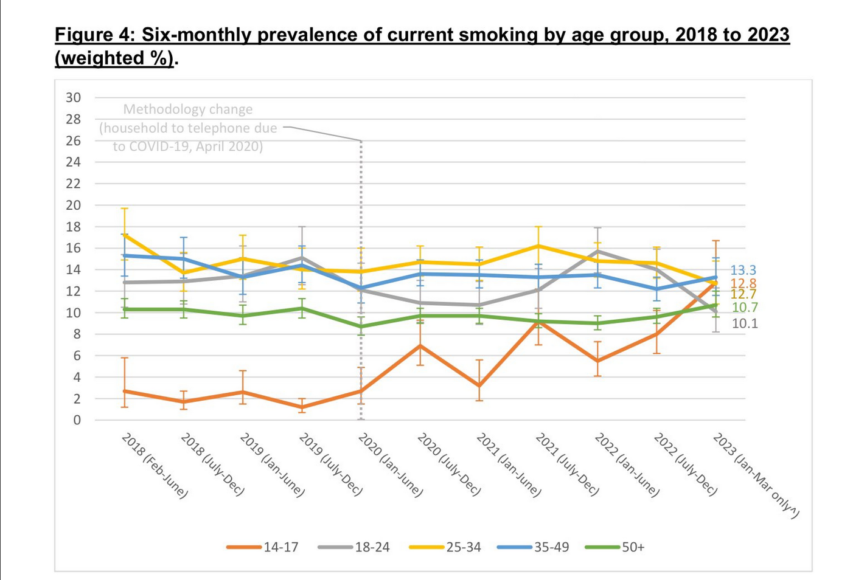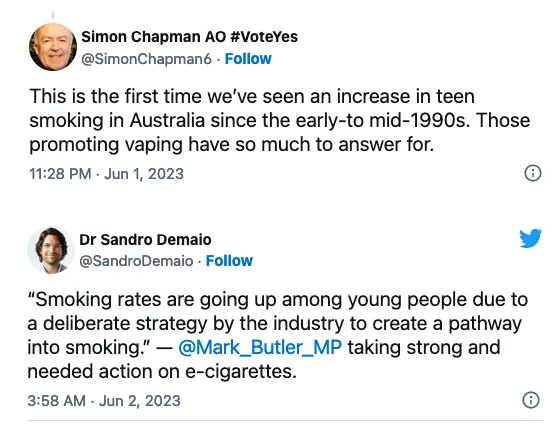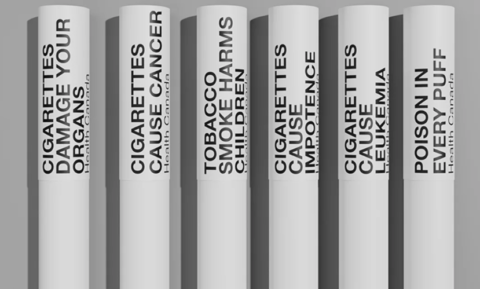Researchers at the University of London Institute of Psychiatry say the distractions of email and such extract a toll on intellectual performance as similar to that of marijuana. The study of 1,100 volunteers found that attention and concentration could be so frazzled by answering and managing calls and messages that IQ temporarily dropped by 10 points. The resulting loss of focus due to “Crackberry”, in fact, was judged to worse than that experienced by pot smokers.
This, of course, cannot really be a surprise. It is a great hallmark of modern life that over-indulgence in practically anything can be turned into pathology given enough time and clinical studies.
Jeff A. Taylor, Reason Express, 2005-04-26.
April 20, 2024
QotD: Cyber-addiction
April 5, 2024
April 1, 2024
March 20, 2024
March 10, 2024
March 6, 2024
February 26, 2024
February 20, 2024
December 13, 2023
Ontario discovers that even “great ideas” with the “best of intentions” sometimes go wrong
In The Line, Adam Zivo reports on Ontario’s “safe supply” drug program running into another one of those pesky human nature problems that couldn’t possibly have been foreseen:
New research from Ontario has yielded further evidence that Canada’s “safer supply” drug programs are being widely defrauded and putting addicts’ lives at risk.
These programs claim to reduce overdoses and deaths by providing drug users with pharmaceutical alternatives to potentially tainted illicit substances. In Canada, that typically means distributing large volumes of hydromorphone, an opioid as potent as heroin, in the hope of reducing consumption of illicit fentanyl.
Addiction experts have widely reported that, based on their clinical experiences, drug users regularly trade or sell (“divert”) some (perhaps much) of their safer supply on the black market to fund the purchase of stronger substances. This has flooded some communities with hydromorphone, crashing its street price by up to 95 per cent over the past three years while spurring new addictions, especially among youth.
The federal government denies that these problems exist and has said that any evidence of harm is “anecdotal” — but two addiction experts working in a hospital in London, Ontario recently used patient data to show that the problem is indeed very real.
Dr. Sharon Koivu and Allison Mackinley (a nurse practitioner) examined the charts of 200 patients who had been referred to Victoria Hospital’s addiction medicine consultation service between January and June 2023.
The review showed that 32 per cent of patients who were not in a safer supply program had self-reported using diverted hydromorphone — the vast majority of these patients indicated that their hydromorphone came from purchasing drugs provided to someone else as part of a safer supply program.
“It was more common for them to actually specify safer supply than to say they didn’t know the source,” said Dr. Koivu in an interview. “They said things like, ‘The person in the apartment beside me goes and picks up her safer supply and when she comes back I get 20 of her pills’. It was quite specific.”
Diversion was not the only problem that was validated.
The chart data suggested that safer supply clients were roughly five-to-10 times more likely to be hospitalized than drug users receiving traditional, evidence-based addiction medications, such as methadone or buprenorphine (these medications are known as “opioid agonist therapy“, or “OAT”). Compared to OAT patients, drug users on safer supply were more than 15 times more likely to be hospitalized for serious infections.
These findings were so concerning that when a group of 35 addiction physicians recently wrote an open letter calling upon the federal government to reform safer supply, they included this data in their accompanying evidence brief.
(This chart, included in a recent evidence brief, compares the number of hospitalized patients with the number of drug users in London, Ontario who receive safer supply (250), methadone (2,000), and buprenorphine (300).)
Safer supply patients also had a slightly higher hospitalization rate, and only slightly lower infection rate, than patients who were receiving no addiction treatment at all, which suggests that the health benefits of safer supply may actually be negligible.
Dr. Koivu said that the hospitalization rate seen among safer supply patients was “alarmingly high” considering that safer supply programs provide significant wraparound supports (i.e. access to doctors, housing and social assistance) in conjunction with free hydromorphone. Any patient who receives such supports should see substantially improved health outcomes.
August 28, 2023
July 19, 2023
June 17, 2023
China’s long-term revenge for the Opium Wars
In Quillette, Aaron Sarin discusses what he calls the “Reverse Opium War” with Chinese drugs flooding the US street drug culture:

Jean-Jacques Grandville cartoon originally published in Charivari in 1840. “I tell you to immediately buy the gift here. We want you to poison yourself completely, because we need a lot of tea in order to digest our beefsteaks.”
Image and translated caption from Wikimedia Commons.
An epidemic is stalking American cities. Every day, men and women die on sidewalks, in bus shelters, on park benches. Some die sprawled in crowded plazas at midday; others die slumped in the corners of lonely gas station bathrooms. Internally, however, the circumstances are the same. They all end their lives swimming in the warm amniotic dream of a lethally dangerous opioid. When it comes, the moment of death is imperceptible: coaxed by the drug further and further from shore, the user simply floats out too far, passing some unmarked point of no return. The heartbeat weakens, the breathing slows and shallows. As soft an end as anyone might wish for.
This is the fentanyl crisis. It may seem strange to connect a very modern and very American phenomenon to a brace of wars waged 200 years ago by the British Empire on the last of the Chinese dynasties. But so the rhetoric runs: we are witnessing a Reverse Opium War; a belated Sinic revenge.
The Communist Party teaches schoolchildren that China was once a glorious superpower, until it was brought low by that subtlest and most devious of British weapons: Lachryma papaveris (poppy tears). Opium sapped the nation’s strength, and when the Chinese authorities banned it, then Britain went to war — twice.
Those wars crippled the Qing and heralded a “century of humiliation” for China — multiple military defeats and lopsided treaties, the Anglo-French looting and burning of the Emperor’s Summer Palace, the Japanese Rape of Nanking and lethal human experimentation by Unit 731 — ending only with the liberating forces of Marxism-Leninism in 1949. Now some commentators are telling us that history has inverted, that karma has kicked in.
Before examining this idea, we should remind ourselves of the American predicament. Ten years ago, fentanyl began its steady flow from China to the United States. Within just three years the drug had surpassed heroin to become the most frequent cause of American overdose deaths. Fentanyl is many times more powerful than heroin, and so there should be no surprise that lethality has spiked since the great Chinese flow began: in 2012, heroin topped the list with 6,155 deaths; by 2016, fentanyl was proving three times as deadly, with 18,335 deaths. The opioid’s influence seeps into all corners of the narcotics market, due to dealers hiding it in cocaine, heroin, and ecstasy. And it leaks across social strata, killing the homeless but also the rock star Prince, who passed away in an elevator at his Paisley Park estate after ingesting fentanyl disguised as Vicodin.
Under American pressure, the Chinese authorities agreed to regulate fentanyl analogs and two fentanyl precursor chemicals, but it soon turned out that shipments were being rerouted via Mexico. With this new arrangement, the crisis only deepened: between 2019 and 2021, the opioid killed 200 Americans a day. Last year alone, the DEA seized quantities of the drug equivalent to 410 million lethal doses. That’s enough to kill everyone in the US. Even a pandemic couldn’t stem the flow for long: in fact, Wuhan is one of the world’s most reliable suppliers of fentanyl precursors (a role it played both before and after starring at the eye of the COVID storm).
The booming fentanyl trade does not appear to rely on traditional criminal organisations, in the way that East Asian methamphetamine trafficking depends on the Triads. Instead, it turns out to be small family-based groups and legitimate businesses who manufacture and move the drug. Usually located on China’s south-eastern seaboard — Zhejiang, Fujian, Guangdong — these groups use the cover of the vast Chinese chemical industry to channel ingredients into the manufacture of fentanyl-class drugs and their precursors.
June 6, 2023
Australia’s “teen smoking rates rose sixfold between 2018 and 2023”
Christopher Snowdon on Australia’s determination to stamp out vaping … even at the cost of vastly increasing the number of tobacco smokers:
More bad news from the supposed world leader in tobacco control. Official figures show that teen smoking rates rose sixfold between 2018 and 2023, from 2% to 12.8%.
It’s been over a decade since Australia introduced plain packaging, a policy that the Southern hemisphere’s wrongest man, Simon Chapman, likened to a vaccine for lung cancer. Australia has had the highest cigarette taxes in the world for ages, the sale of nicotine e-cigarettes has always been illegal, and all they have to show for it is an insanely big black market for both tobacco and e-cigarettes, more children smoking and a whole bunch of people using unregulated vapes. The wowsers just can’t stop winning, can they?
Naturally, this has led to much soul searching among the tobacco control elite who are having to reassess their assumptions in the face of this overwhelming evidence of policy failure.
I’m joking, of course. They are doubling down again.
If you spoke to someone from the reality-based community, they would tell you that children find it easier to access a product when the market is in the hands of illicit traders because illicit traders don’t care who they sell to. They might also point out that the Australian government has gone out of its way to portray vaping as being at least as bad as smoking. School children in Australia are taught that vaping causes brain damage. Public health agencies produce websites that purport to tell people the facts about vaping but actually tell them lies and misleading half-truths.
June 5, 2023
“… if I were a teenager and I read on a cigarette the words, ‘Poison in every puff!’ I’d think it was a catchy marketing jingle”
Christopher Gage on the Canadian government’s ludicrous next anti-smoking campaign, putting scary messages on every single cigarette in a pack:
I resisted smoking until age ten. Back then, the local boys and I would tramp over the local fields in search of dried ferns upon which to practise the deadly, seductive art of smoking.
By high school, we’d graduated onto the proper cancer sticks. Every morning, we’d pool together our lunch money, and skulk outside the off-license in wait for a nameless reprobate to slip into the shop and, for buyer’s rights of one cigarette, smuggle us ten Lambert and Butler.
Since then, save four years of misguided, anti-smoking zealotry, I’ve smoked with a sinful enthusiasm. Few share my woeful pursuit.
This week, Canada announced a “world-first”. They’ll soon begin printing health warnings directly onto cigarettes.
Neophiles with an addiction to “progress” laud this wearisome world-first. Giddy are the pink-lunged puritans.
Sorry to be facetious, but if I were a teenager and I read on a cigarette the words, “Poison in every puff!” I’d think it was a catchy marketing jingle. I’d happily sign up for a lifetime of chuffing away my health.
Perhaps they should market specifically to Millennials. “Who cares? You’ll never buy your own home,” is particularly resonant.
This is all part of a scheme to cut smoking rates to below five percent by 2035.
Reader, what happens then? Once the health fascists defeat us smokers, from whom shall they siphon their righteous fix?
The irony: as smoking declines, obesity balloons. Between 2003 and 2017, obesity deaths spiked by a third. One in four deaths is now related to one’s weight. Corpulence chalks more bodies than the cancer stick.
I’m yet to see a warning label plastered on the side of a family bucket of KFC. But give it time.
You can live as long as you like, as long as you don’t like living.
May 30, 2023
Australia’s … deranged … attitudes to vaping
Christopher Snowden describes — because it’s impossible to actually explain — the Australian government’s hysterial and illogical attitude toward vaping:

King James I would recognize and approve of Australia’s anti-vaping stance, probably. It would certainly be in the same territory as His Majesty’s pamphlet A Counterblaste to Tobacco where he let his strong feelings be known about “so vile and stinking a custom”.
For the past decade, Australian newspaper articles about e-cigarettes have seemed like communiqués from another dimension. The term “moral panic” is over-used, but how else can you describe a situation in which people are so terrified of safer nicotine delivery devices that doctors give their children cigarettes to stop them vaping?
The sale of nicotine e-cigarettes has always been banned in Australia. Prohibition is the default and, along with the highest cigarette taxes in the world, it has led to a huge black market in vapes (and, indeed, in tobacco). It appears that many teenagers are vaping there and what they are vaping is unregulated.
The Aussies could have done what New Zealand did and legalise e-cigarettes. Instead, they doubled down and banned the importation of nicotine vapes for personal use. That didn’t work so they are now banning the sale of all the remaining (i.e. non-nicotine) disposable vapes. Something tells me that won’t work either, but the government is so far down the rabbit hole it can only keep digging.
Their politicians have convinced themselves that “Big Tobacco” is getting a new generation of Aussies hooked on killer vapes with aggressive marketing. It’s a paranoid delusion. There is no e-cigarette marketing in Australia. The products flooding the black market are coming straight from China, not from “Big Tobacco”. And insofar as the products are dangerous it is because they are totally unregulated.
Down this road lies madness but if the Australians want to go down it, that’s up to them. I have no plans to go back there. As an Australian reader said to me recently, “Go and see a Kangaroo at a zoo. Don’t even waste a single dollar on ‘tourism’ of the doomed failed state of what’s become of Australia.”
But while the Aussies can go to Hell in whatever handcart they like, I don’t appreciate them pushing their nonsense on the rest of us, as the BBC’s recently appointed Sydney correspondent has done today with an article titled “Why Australia decided to quit its vaping habit“.
From the outset, it is clear that the author has spent too long Down Under.
Despite vapes already being illegal for many, under new legislation they will become available by prescription only.
The number of vaping teenagers in Australia has soared in recent years and authorities say it is the “number one behavioural issue” in schools across the country.
And they blame disposable vapes — which some experts say could be more addictive than heroin and cocaine — but for now are available in Australia in every convenience store, next to the chocolate bars at the counter.
Some experts? Do they have names? People say a lot of things. The job of a journalist is to find out which ones are telling the truth.
And if e-cigarettes are illegal, why are they available “in every convenience store”? This sounds like an enforcement issue that isn’t going to be solved by more prohibition.

